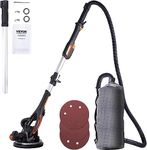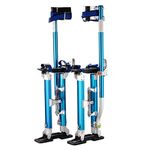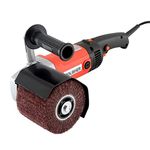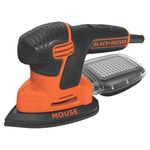10 bestDrywall Sandersof December 2025
112M consumers helped this year.
1
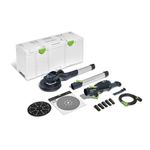
Festool 575994 Planex LHS 2 225 EQI-Plus Drywall Sander
Festool

9.8
28% off
2

DEWALT 20V MAX Cordless Drywall Sander Kit with Battery & Charger Included (DCE800P2)
DEWALT

9.6
14% off
3
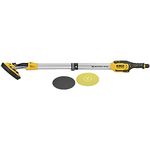
DEWALT DCE800B 20V MAX* Cordless Drywall Sander (Tool Only)
DEWALT

9.4
4

BOSCH GTR55-85 9 in. Corded Drywall Sander Kit
Bosch

9.1
5

Drywall Sander with Vacuum, 780W Power Electric Sander for Drywall, Auto Dust Absorption, 7 Variable Speed 950-1850RPM, Dustless Floor Sander for Popcorn Ceiling, Wood Floor
Gioventù

8.9
Other
6

XDOVET 850W Drywall Sander with 20 Sanding Discs,Drywall Sander with Vacuum,6 Variable Speeds from 800 to 1750 RPM,Popcorn Ceiling Removal Tool with Extendable Handle, LED Lighting(Red)
XDOVET

8.6
7
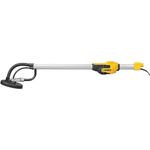
DEWALT DWE7800 4.7 Amp Electric Drywall Sander
DEWALT

8.3
8
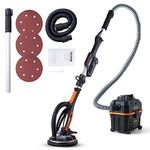
VEVOR Drywall Sander, 800W Brushless Motor Electric Sander, Variable Speed 1000-2300 RPM Wall Sander, Foldable Ceiling Sanders with Double-Deck LED Lights, Extendable Handle, 12 Sanding Discs
VEVOR

8.0
9

Hyde Tools 09175 Drywall Vacuum Sander, Silver,Gray, with Pole
Hyde

7.7
10
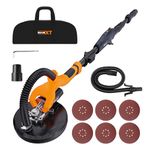
Drywall Sander with Carrying Bag by Maxxt-tech Canada; 6pcs 9" Sanding Disc; Telescopic; Infinitely Variable Speed; 13FT Dust Hose
MAXXT

7.4
A Guide to Selecting the Best Drywall Sanders
Choosing the right drywall sander can make your wall finishing projects much easier and more efficient. The best sander for you depends on the size of your projects, the type of surfaces you work on, and your comfort with handling power tools. Understanding the key features will help you select a sander that matches your needs and ensures a smooth, professional finish.
Type (Manual vs. Electric)
The type of drywall sander refers to whether it is powered by electricity or operated manually. Manual sanders are simple hand tools that require physical effort and are best for small touch-ups or tight spaces. Electric sanders, on the other hand, use a motor to spin or vibrate the sanding pad, making them much faster and less tiring for larger areas. If you have a lot of walls or ceilings to sand, an electric sander will save you time and effort, while a manual sander is suitable for occasional or small-scale jobs.
Sanding Pad Size
The sanding pad size determines how much surface area you can cover at once. Larger pads (around 9 inches or more) are great for quickly sanding big, flat areas, while smaller pads are better for detailed work or getting into corners. If you mostly work on large, open walls, a bigger pad will help you finish faster. For more intricate jobs or spaces with lots of edges, a smaller pad gives you better control.
Dust Collection
Dust collection refers to the sander’s ability to capture the fine dust created during sanding. Some sanders have built-in vacuum systems or can be connected to external vacuums, while others have simple dust bags or no collection at all. Good dust collection keeps your workspace cleaner and reduces the amount of airborne dust you breathe in. If you’re working indoors or want to minimize cleanup, look for a sander with effective dust collection.
Weight and Ergonomics
The weight and ergonomics of a drywall sander affect how comfortable it is to use, especially for long periods or overhead work. Lighter sanders are easier to handle and cause less fatigue, while heavier models may be more stable but harder to maneuver. Ergonomic handles and adjustable features can also make a big difference in comfort. If you expect to sand ceilings or work for extended periods, prioritize a lightweight, well-balanced sander.
Variable Speed Control
Variable speed control allows you to adjust how fast the sanding pad moves. Lower speeds are useful for delicate surfaces or finishing touches, while higher speeds remove material more quickly. Having the ability to change speeds gives you more control and helps you avoid damaging the drywall. If you work on a variety of surfaces or want more precision, choose a sander with variable speed settings.
Reach and Extension
Reach and extension refer to the length of the sander and whether it has an extendable handle. Longer or extendable sanders make it easier to reach high walls and ceilings without a ladder. If you often work on tall surfaces or want to avoid climbing, look for a sander with a telescoping or extendable handle.
Best Reviews Guide Newsletter
Get exclusive articles, recommendations, shopping tips, and sales alerts
Sign up for our newsletter to receive weekly recommendations about seasonal and trendy products
Thank you for subscribing!
By submitting your email address you agree to our Terms and Conditions and Privacy Policy


